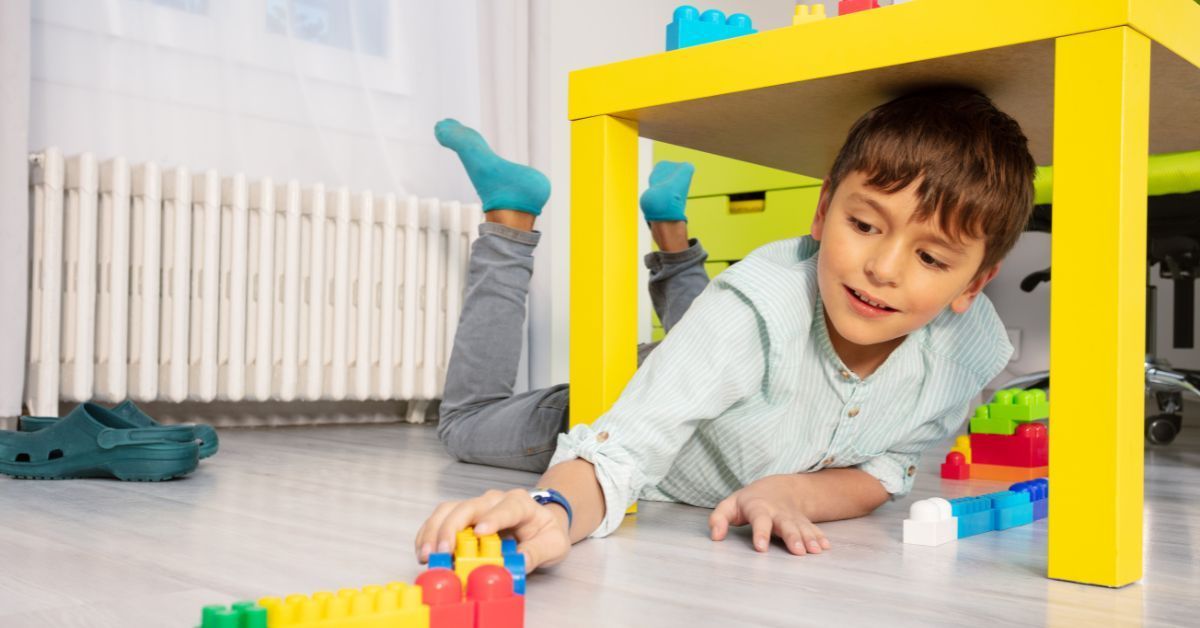How ABA Therapy Prepares Kids for Life Experiences
Early intervention is crucial for children with autism, providing the best opportunity to build skills that will help them thrive in everyday life. Among the evidence-based methods available, Applied Behavior Analysis (ABA) therapy stands out as a trusted and effective approach. Its structured techniques focus on shaping positive behaviors and teaching practical skills that children can use throughout their lives.
This blog explores how ABA therapy prepares kids for life experiences, focusing on the key areas of development it supports and the role it plays in shaping brighter futures.
What Is ABA Therapy?
Applied Behavior Analysis (ABA) therapy is a scientifically supported approach designed to improve specific behaviors through positive reinforcement and structured learning. At its core, ABA therapy focuses on understanding how behavior works, how the environment affects behavior, and how learning takes place. By breaking goals into small, manageable steps, children can develop essential skills in a clear, measurable, and supportive manner.
Through ABA therapy, practitioners use reinforcement strategies to reduce behaviors that may be harmful or challenging. The goal is to empower children to become more independent, communicative, and socially engaged. Studies consistently demonstrate its benefits for children with autism, including improving their quality of life and enhancing developmental progress.
How ABA Therapy Supports Skill Development

Building Social Skills
Social interactions can be challenging for children with autism, yet they are essential for building connections and navigating the world. ABA therapy focuses on teaching social behaviors that are fundamental to forming relationships—such as taking turns in conversation, making eye contact, and sharing during play. ABA therapy gradually introduces and reinforces these skills in positive and meaningful ways.
The structured approach of ABA therapy helps children practice these interactions in real-life scenarios, making social interactions less intimidating and more natural over time.
Improving Communication Skills
Language and communication, whether verbal or non-verbal, play a vital role in a child’s ability to express their needs and understand others. ABA therapy is instrumental in enhancing both types of communication. Therapists create individualized goals for children, such as learning to ask for help, follow instructions, or interpret body language. Over time, these tailored techniques help children build confidence in expressing themselves and actively participating in social and educational environments.
Developing Self-Regulation and Emotional Control
Managing emotions and understanding how to respond to various situations are critical life skills. ABA therapy equips children with strategies to recognize their emotions and develop effective methods to self-regulate.
Children gradually gain the tools to handle stressful or overwhelming situations, from learning how to identify feelings of frustration to practicing calming techniques. This emotional resilience supports their long-term ability to adapt and thrive.
ABA Therapy’s Impact on Daily Life Skills
Promoting Independence in Daily Routines
One of the most important ways ABA therapy prepares kids for life experiences is by fostering independence in everyday tasks. ABA therapy uses step-by-step methods to teach children how to manage these routines on their own, whether it’s brushing their teeth, getting dressed, or eating meals. Successfully performing these tasks boosts a child’s confidence and eases the daily lives of their caregivers.
Navigating Transitions
Change is an inevitable part of life, yet it can be particularly challenging for children with autism. Transitions between activities or adapting to unexpected changes often cause stress. Through ABA therapy, children learn strategies to manage these moments more effectively. Gradually, they gain confidence in moving between environments, starting new activities, and coping with challenges, preparing them for the dynamic nature of life.
For instance, a child might initially struggle when moving from playtime to mealtime or when transitioning between different classrooms at school. ABA therapists use techniques such as visual schedules, countdown timers, and role-playing to help children understand what to expect next and reduce anxiety.
By practicing these skills in a structured and supportive environment, children can handle transitions with more ease, whether shifting from one task to another during a routine or adjusting to a change in plans during the day, such as a last-minute outing or a change in caregiver.
How ABA Therapy Prepares Children for School and Beyond
Building Foundations for Academic Success
The classroom environment demands focus, attention, and problem-solving skills, which ABA therapy works to nurture. By developing the ability to follow classroom rules, complete assignments, and collaborate with peers, children gain the foundational skills needed to succeed academically. Early exposure to structured learning techniques can ensure a smoother transition into school, laying the groundwork for future achievements.
Preparing for Social Interactions With Peers
Friendship is a core part of childhood, but for children with autism, forming and maintaining peer relationships can be challenging. ABA therapy teaches children the fundamentals of social interaction, from understanding the nuances of play to engaging in group activities. These skills allow them to meaningfully connect with others and thrive in social settings, whether at school, a playground, or beyond.
The Role of Families and the ABA Therapy Center in Progress

Family Involvement and Support
Family members are pivotal to the child’s ABA therapy’s success. Collaboration between therapists and caregivers ensures that the caregivers can consistently reinforce the techniques taught during sessions at home. By adopting ABA strategies in daily interactions, families can further support their child’s progress, creating a seamless environment for learning and growth.
For example, a parent might work with their child on communication skills by using picture cards to help them express their needs or encouraging social interactions during playtime. Consistently using these strategies across various settings strengthens the learning process and builds familiarity for the child.
Additionally, therapists often provide families with specific guidance and resources, helping them understand how to apply the skills in different situations, such as managing mealtime routines or guiding behavior during family outings. This partnership between family members and therapists ensures that children experience continuous support, boosting their confidence and making it easier for them to generalize learned skills into real-life scenarios.
The ABA Therapy Center’s Role
A specialized ABA therapy center serves as a hub for personalized care and expert guidance. These centers have professionals who understand each child’s unique needs, offering tailored treatment plans that maximize developmental progress.
The collaborative efforts between families and therapists at these centers create a strong support system, ensuring children receive the best possible outcomes in their therapeutic journey.
Setting the Stage for Future Success
ABA therapy is a foundational tool that equips children with autism for the many experiences they will encounter throughout their lives, from school to community interactions and beyond. By focusing on critical skill areas like communication, independence, and emotional regulation, ABA therapy empowers children to confidently meet challenges. Often, families that take early steps to engage in this evidence-based approach see profound, long-term benefits for their child’s development.
Consider connecting with a trusted therapy center near you if you want to provide your child with the skills they need to succeed. Remember, the investment made in ABA therapy today paves the way for a brighter, more independent future.







